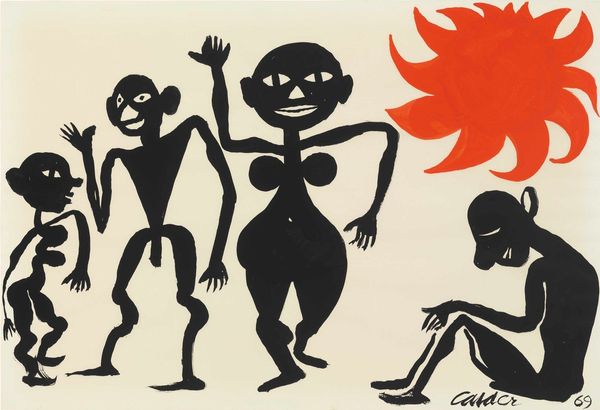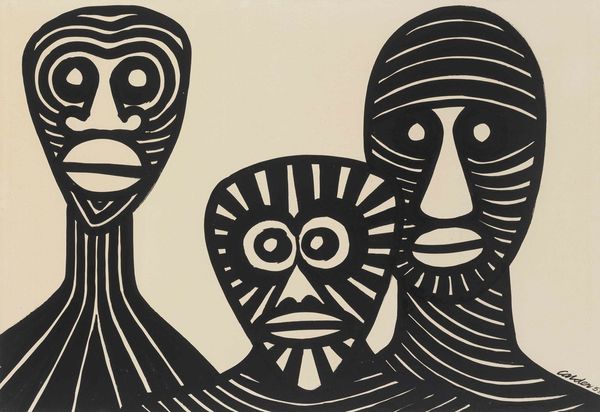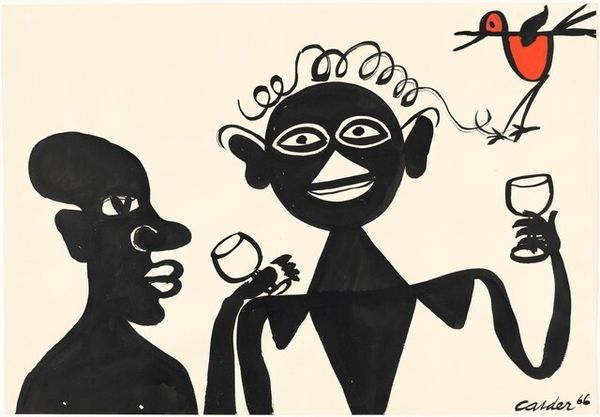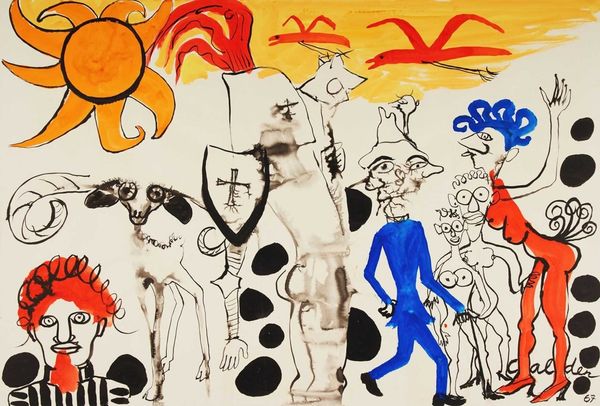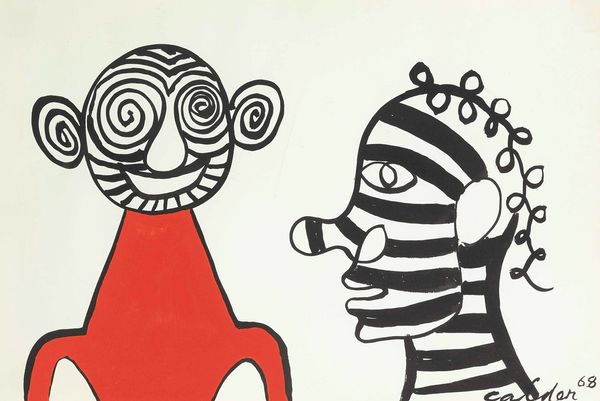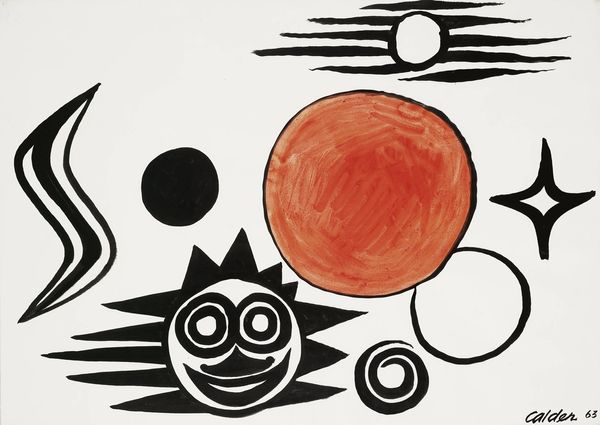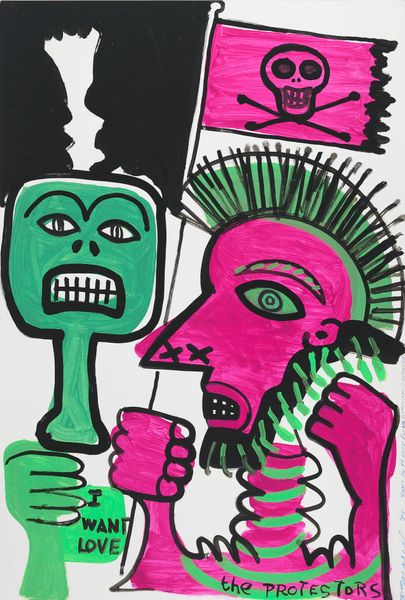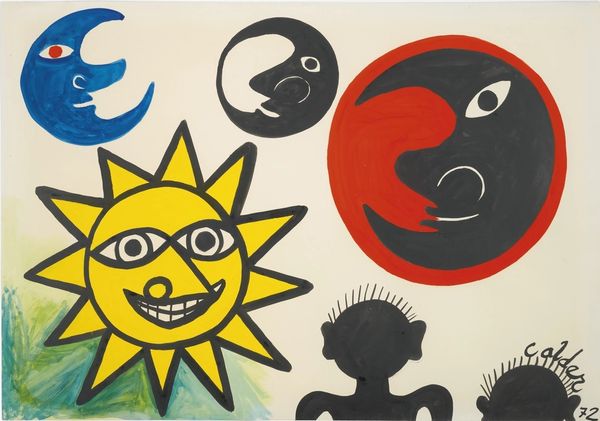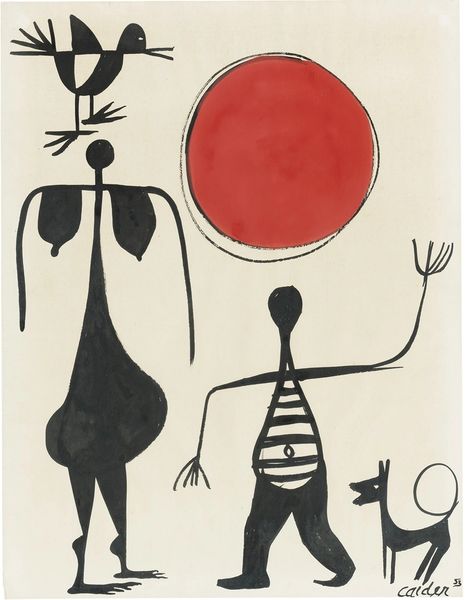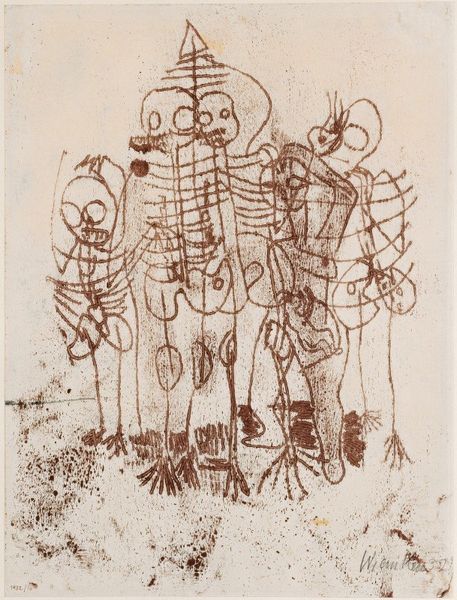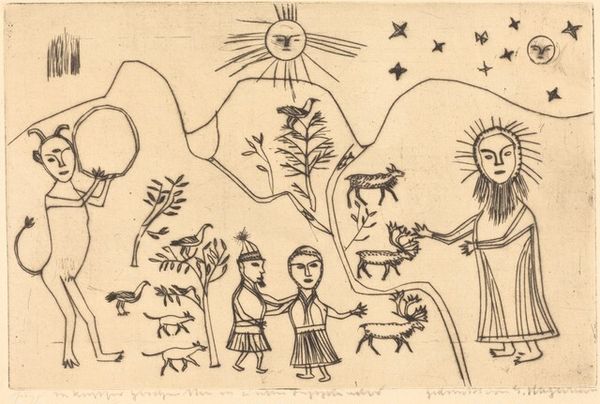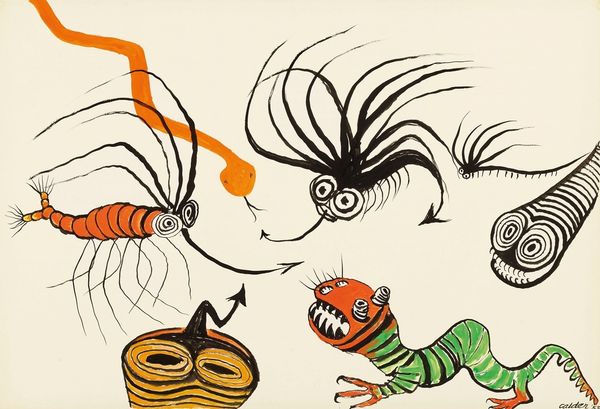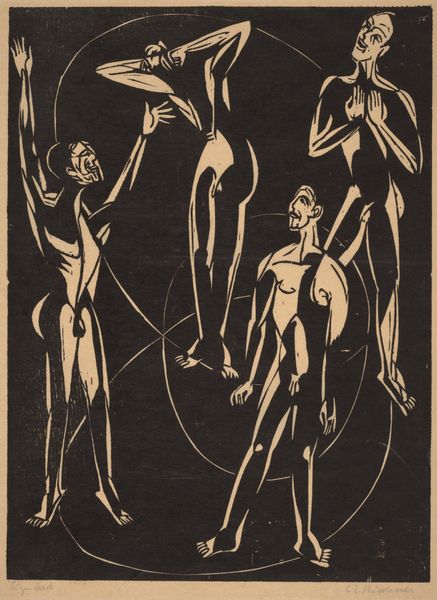
Copyright: Modern Artists: Artvee
Curator: Immediately, I'm struck by the almost joyful darkness. It's stark, but there's a lightness in the figures' expressions. Editor: Exactly. Let's explore "African Scene," a 1966 ink on paper drawing by Alexander Calder. His playfulness is readily on display, wouldn’t you say? Curator: Absolutely, it’s as if Calder took a detour through a child's imagination, all bold lines and simplified forms. What’s interesting to me is how those blank, eye-like spaces still convey so much feeling. Editor: Yes! And if you delve into it, these stylized silhouettes draw heavily from iconic forms. Look at the sun—a burst of jagged rays. That symbol is potent across cultures and eras, representing life-giving energy. Then, there's the umbrella held by the larger figure. It becomes an emblem of protection, status…maybe even colonial imposition. Curator: That's a delicious tension, isn’t it? This seemingly simple scene hinting at layers of history and power dynamics. And then the figure on the left—he has what appears to be wheels. A toy, perhaps, or something more ritualistic? It's enigmatic. I feel that Calder manages to make the most primitive depiction feel deeply considered. Editor: Precisely, that echo of ritual—we find related figures in everything from Cycladic idols to Picasso's exploration of African masks. Those exaggerated features, particularly in the taller figure, become carriers of cultural memory. Curator: Thinking of it, it has this marvelous confidence to embrace direct, uncomplicated expression, stripping everything back to primal forms and basic symbols, but somehow it lands into the profound, playful storytelling space for me. Editor: Indeed. Calder offers not a definitive statement, but rather an invitation to ponder shared visual heritage and those charged objects we imbue with such meaning.
Comments
No comments
Be the first to comment and join the conversation on the ultimate creative platform.
